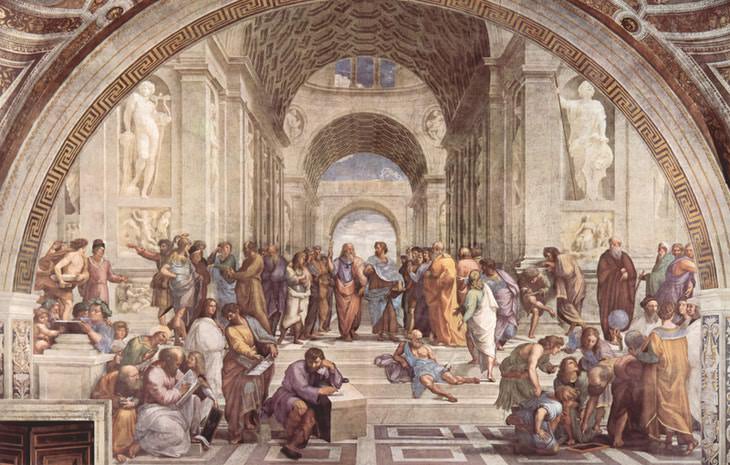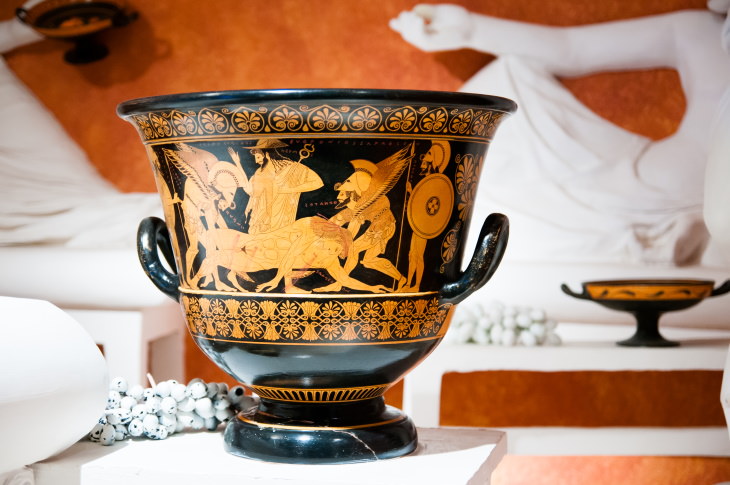1. Circa (abbreviated as c., ca.)
In English, the word circa and its abbreviations are a way to state that an event took place or an object dates back to an approximate time. For example, when the specific year when an artist created a painting cannot be established, but the general period is known, you will see “circa 1560” instead of just “1560” written in a note next to its title in a museum or a publication.
Essentially, circa is just another way to say "around." The meaning of this word is easy to remember once you know that, just like “around”, circa comes from the Latin word for describing something round - circum. As you may have noticed, several other English words, such as circle and circumference, stem from the same Latin root.
2. Id est (abbreviated as i.e.)
Most people aren’t familiar with the full version of i.e., which is id est. The term can be translated from Latin as “that is”, and it usually precedes a more thorough explanation of the topic discussed in a sentence, just like the English phrase “in other words” or “namely”.
Here’s an example: “Only one city, i.e., London, has hosted the Summer Olympics three times.” A common mistake people make when using i.e. is to only use it before a list, as in “Popular pets, i.e. dogs, cats, and birds, have lived in human homes for thousands of years,” much like you would use e.g. (or for example). Although you can use id est in that way, you can also describe or specify anything mentioned prior in a sentence with the help of this abbreviation.
3. Post scriptum (abbreviated as P.S.)
Everyone who has ever received an email or a letter is familiar with P.S., i.e. that little note at the end that is written as an afterthought, as in, “P.S. My warmest wishes to Harry and Linda, I hear that they just recently got engaged.” But have you ever wondered what the letters P and S stand for?
It’s a shortening of the Latin phrase Post Scriptum, which can be translated into English as "written after". You’d be surprised to find out that the humble P.S. has a long history in the English language - scientists found it in letters that date all the way back to the 1550s.
4. Videlicet (viz.)
Are you familiar with this one? The abbreviation viz. stops many experienced readers in their tracks, and rightfully so, as it sees little use these days. Viz. is the abbreviation of videlicet, which in itself is a shortening of the Latin phrase videre licet, meaning "it is permitted to see".
Like i.e., viz. is considered a synonym for "namely", and the difference between the two is very slight, so most people actually use the two interchangeably in sentences like the following, “Each symbol represents one of the four elements, viz. earth, air, fire, and water.” As you can see, viz. precedes a full list of words that specify the phrase that comes before it - in our case, it is the four elements.
5. Stat
You’ve likely encountered this one if you’re a fan of medical TV shows. In an emergency situation, a doctor may say something like, “This patient needs 0.5 ccs of ibuprofen, stat!” From the context of the show, you’ve probably understood that stat means “immediately,” and if you have, you’d be absolutely right. Stat is a shortening of the Latin adverb statim, which means “instantly” or “immediately”.
In reality, though, stat is mostly used in written directions to medical staff and is actually rarely uttered in emergency situations as all hospital TV shows attempt to convince us.
6. Nota bene (N.b.)
You can sometimes find N.b. as a footnote, much like you would P.S. But how do these two abbreviations differ in use and meaning? Quite a lot, it turns out, as unlike postscript, N.b. is NOT an afterthought or a note on an entirely unrelated subject. In fact, it’s the opposite - the information written after N.b. is a noteworthy and often very important part of a message or text, which is exactly why it is mentioned separately.
For example, you could write “N.b. This substance is highly flammable, so keep it out of the sun.” As for the etymology, N. b. stands for Nota bene, which can be translated as “note well”. In essence, when you see N.b. as a side note or a footnote, it means “pay attention!”
7. Et alia (et al.)
In a previous article titled 15 Latin Phrases We Use to This Day Without Even Realizing, we told you all about et cetera, better known as etc., which is a way to denote that list of things mentioned in a sentence isn’t exhaustive, as in, “Cruciferous vegetables like cabbage, broccoli, kale, etc. have risen in popularity recently due to their apparent cancer-fighting properties.”
Now, there’s a Latin phrase that’s very similar to et cetera, but it can only be used to list people. This phrase is et alia, but we pretty much only use its abbreviation - et al. - in English.
Et al. always refers to people, and the most common place you will see this abbreviation is in texts that cite academic papers, e.g. “Psychodynamic theory (Sigmund Freud et al.), states that these defenses are a way of distancing ourselves from acknowledging unpleasant thoughts, feelings, and behaviors as we go through our lives.” Instead of writing “Sigmund Freud and others”, the author used “Sigmund Freud et al.”
Share these useful Latin phrases with those who love learning about languages!







